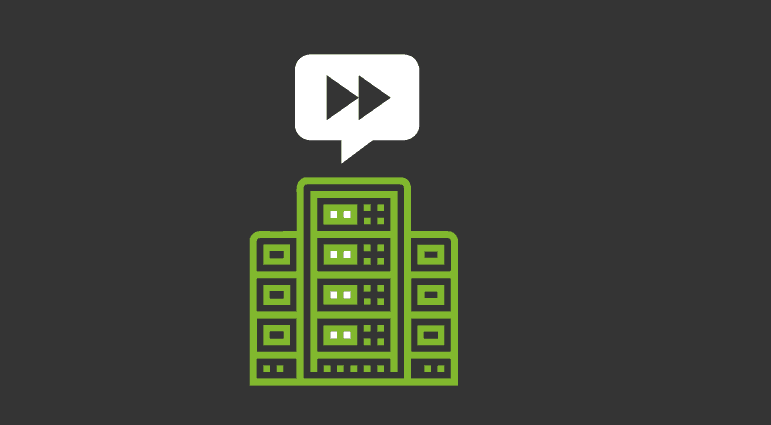Hyperconvergence and its challenges for monitoring
Hyperconvergence, hyperconvergent platforms, hyperconvergent modules, are relatively new terms in the world of data centers.
In addition, each technology that emerges or evolves and succeeds in penetrating the market represents new challenges for monitoring platforms.
Thus, hyperconvergence is another in the list, which includes elements such as the cloud, software-defined networks, edge computing, DevOps, Agile, and so many others.
In this post we invite you to review what hyperconvergence is, what changes it represents for the conformation and management of data centers and what challenges it poses in terms of visibility and monitoring.
About hyperconvergence
Let’s start from the traditional architecture of data centers, which involves the presence of different devices such as servers, storage hardware and network switches.
Each element is provided by different manufacturers and the administrators of the data centers were in charge of integrating and managing them using the facilities provided by each team for these activities.
The Convergence is then presented as the property through which two or more components are grouped in the same device, capable of performing the same function or providing the same service.
This concept, applied to data centers, refers to the grouping into a single component of the elements that make up the center’s platform, such as servers, storage hardware, and network devices.
Since it is a question of the unification of elements coming from different manufacturers, the administrative and support capacities are still supplied by these different manufacturers, without establishing a single platform.
Convergence models then undergo a change with the penetration of virtualization technologies, since beyond the physical grouping there is the possibility of creating virtual units with specific capacities of computation, memory and network.
Then the possibility arises of a new convergence architecture that starts with grouping, but now in function of the hypervisor that sustains the creation of the virtual elements.
It is precisely based on the word hypervisor that the term hyper-convergence is coined, in which both physical and virtual components are combined in the same element, regularly called a module or node.
Thus, modules in hyperconverging architectures are units made up of both physical and virtual elements.
Applying hyperconvergence, administrators should not think about scaling by integrating more computing capacity, new servers, more disks or a new network switch, but should think about adding more and more modules, in a scalability that in theory is unlimited.
Characteristics of hyperconvergence
Three characteristics of hyperconvergent platforms are worth mentioning.
On the one hand is the fact that the integration of the elements is achieved natively, eliminating the need for elements such as SAN switches and disk controllers.
On the other hand, we have that the modules or nodes can work with multiple virtualization platforms, of course from different manufacturers.
Finally, we must mention the administration and support software of these modules; in general, hyperconvergence solutions suppose the existence of single administrator software which will be provided by a single provider.
A single point of administration of all the hyperconvergent elements that make up a data centre or the entire platform of several data centres is then considered.
In addition, this management software brings with it additional capabilities, including replication, backup, disaster recovery, compression, cloud connection, and even monitoring.
Application of hyperconvergence
The penetration of hyperconvergence has been for a few years very considerable, and is expected to grow to represent a market of $17 trillion by 2023, as estimated by Markets and Markets analysts in this report.
https://www.marketsandmarkets.com/PressReleases/hyper-converged-infrastructure.asp
In any case, as we mentioned in an article on data center monitoring, part of the administrators’ job is to evaluate emerging technologies, from advancements in hard drives to the implementation of new architectures.
Therefore, hyperconvergence is one more alternative that managers should evaluate and determine whether their technical advantages are useful to them and whether the supposed economic advantages are attainable for particular cases.
Challenges for monitoring
Hyperconvergence is an interesting simplification in terms of data centre architecture. In hyperconvergent platforms we will have to deal with fewer server models, SAM units, controllers, suppliers, etc.
It also simplifies the scalability scheme, which means that whatever monitoring scheme we define this will not be so affected or challenged with the natural growth of the data center.
But of course we can also think of a negative element and this is, at first glance, the fact that in hyperconvergent platforms the modules become black boxes that could greatly affect our ability to visualize and therefore monitor.
However, as we said in the previous section, hyperconvergence technology providers enrich their offer with administrative software that has monitoring capabilities.
In fact, many offers talk about establishing a scheme of total visibility for all the modules that compose it and of course all the subsystems that compose each module (computation, memory, network, virtualization, application, etc.).
Even if you look at some of the manufacturers you will see that they deal with the issue of monitoring by mentioning their capabilities from physical infrastructure monitoring to application monitoring, including network and storage monitoring.
If we consider that this is true, the real challenge is then posed as an integration challenge between the general purpose monitoring tool like Pandora FMS and the monitoring tools that are acquired with hyperconvergence products.
If you are thinking about starting this integration from, for example, SNMP-based monitoring, understanding the modules as any device, may be interesting technically speaking, but it doesn’t sound very promising in terms of efficiency.
A more encouraging starting point may be the log files. The idea would be to extend the log file monitoring capabilities of our general purpose-monitoring platform, including the log files from the hyperconvergent platform.
If you need to become familiar with the log files and related monitoring, then read this post.
The important point is that most of the hyperconvergence solutions include the handling of logs files with the registry, which should be detailed and transparent, of everything that happens internally in the modules, being able then to establish the sending of the logs files to a collection point from where our monitoring tool can access them.
On the other hand, virtualization is a basic element in hyperconverging platforms, for which most solutions propose a scheme in which any virtualization scheme is viable.
Therefore, in order to integrate the hyperconvergent platform to a general-purpose monitoring scheme, we will rely on the experience we have acquired in monitoring virtual environments.
Here the challenge for the monitoring platform is that it must have a scope as wide as that of the hyperconvergent platform.
In the following link you will be able to obtain more information about Pandora FMS capabilities in virtual platform monitoring.
Now, although the integration through log files and the monitoring of virtual environments are interesting points, at the end of the day the ideal would be the exchange of information between the two tools on the status and performance of the platform.
We do not remain only with the data contributed by the log files or the possibility of extending the monitoring of the virtual environments, but to extract from the administrative tools of the hyperconvergence platform reliable and transparent information on the internal performance of the modules and to integrate this information in our monitoring tool.
If such an exchange includes elements such as alerts, for example, it can undoubtedly be very interesting in terms of efficiency of the entire monitoring platform.
Therefore, organizations that have made efforts to install, configure and tune their monitoring tools such as Pandora FMS should be able to demand this type of integration from their hyperconvergence providers, making this integration and its scope one of the central decision points when choosing a solution among the hyperconvergence solutions market.



















